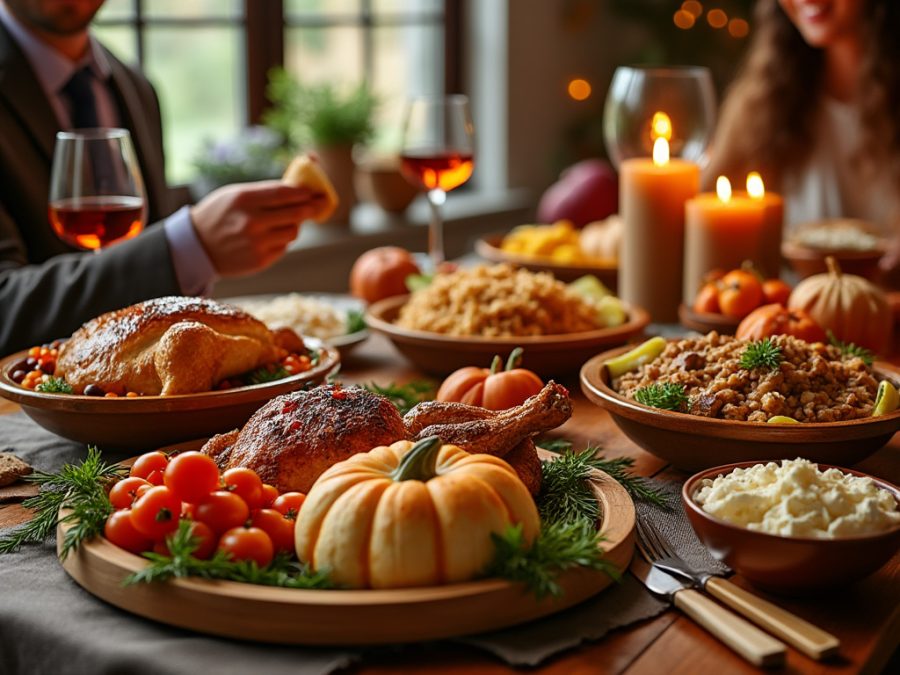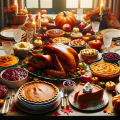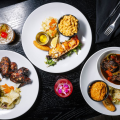
The story of Thanksgiving in America starts with the pilgrims, who were English Separatists seeking religious freedom. In 1620, these settlers aboard the Mayflower landed at Plymouth, Massachusetts. Facing harsh conditions, many did not survive the first winter. However, with the help of the Wampanoag, a Native American tribe, they learned to cultivate the land and hunt.
In the autumn of 1621, following a successful harvest, the pilgrims held a feast to give thanks. This event, often simplified in historical accounts, was less a formal celebration and more a series of gatherings where the pilgrims and Wampanoag shared food, including venison, fish, and fowl. This feast is widely regarded as the first Thanksgiving, though it wasn’t annually celebrated at the time.
Over the years, similar thanksgiving observances occurred sporadically, but it wasn’t until 1863, during the Civil War, that President Abraham Lincoln proclaimed a national day of “Thanksgiving and Praise to our beneficent Father who dwelleth in the Heavens.” This was set for the last Thursday in November, aiming to foster a sense of unity during a divided time.
Modern Celebrations in America:
Today, Thanksgiving is celebrated on the fourth Thursday in November, marking the beginning of the holiday season. Here’s how it unfolds:
Parades and Football:
- The morning often begins with families watching or attending parades, with the Macy’s Thanksgiving Day Parade in New York City being the most famous, featuring gigantic balloons, floats, and performances.
- Football is a significant part of the day, with games broadcasted on television, bringing friends and families together to cheer for their favorite teams.
The Thanksgiving Feast:
- The heart of Thanksgiving lies in its feast. Central to this is the roast turkey, golden-brown, its skin crackling with flavor, often stuffed with a savory bread or cornbread dressing. The aroma of roasting turkey fills homes across the nation.
- Alongside the turkey, there’s a cornucopia of side dishes:
- Mashed Potatoes, whipped to creamy perfection, sometimes with a swirl of butter or gravy on top.
- Sweet Potato Casserole, topped with a crunchy layer of marshmallows or pecans, offering a sweet, caramelized taste.
- Green Bean Casserole, with its crispy fried onions providing a delightful crunch against the creamy mushroom sauce.
- Cranberry Sauce, which ranges from the jellied version with its iconic can ridges to homemade versions bursting with tartness and sweetness.
- Stuffing or Dressing, varying by region but always a crowd favorite, often seasoned with sage, thyme, and sometimes including sausage or chestnuts.
- Vegetables like roasted Brussels sprouts or glazed carrots add color and nutrition to the plate.
- Desserts are a highlight, with pumpkin pie leading the pack. Its rich, spiced filling in a flaky crust, often topped with whipped cream, is almost synonymous with Thanksgiving. Pecan pie, apple pie, and sometimes sweet potato pie also grace the table, each slice a testament to American culinary tradition.
Family and Friends:
- Thanksgiving is fundamentally about gathering. Families travel great distances to be together, and friends often join in, creating a communal atmosphere where laughter, storytelling, and gratitude are shared.
- The day often includes moments of giving thanks, either formally around the dinner table where each person shares something they’re grateful for, or quietly in one’s heart.
- Post-feast activities might include watching football, playing games, or taking leisurely walks to enjoy the crisp autumn air, giving thanks for the day’s abundance and companionship.
In essence, Thanksgiving has evolved from a simple harvest festival to a national holiday that celebrates gratitude, family, and the rich tapestry of American culture through its food, traditions, and togetherness.








